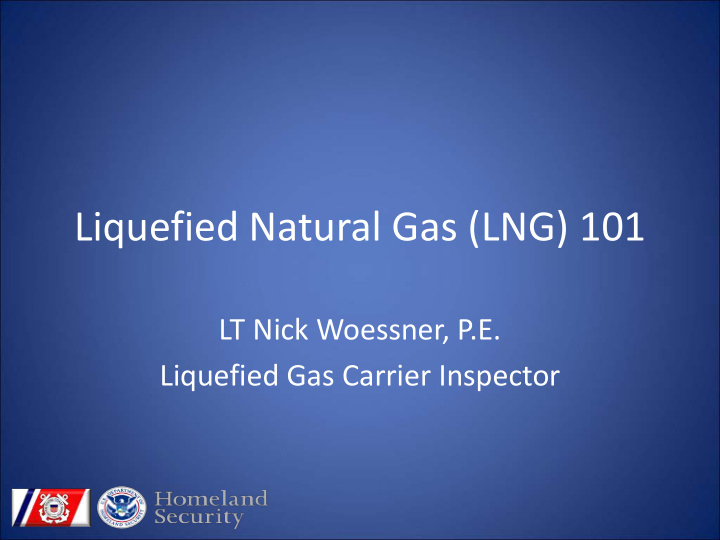



Liquefied Natural Gas (LNG) 101 LT Nick Woessner, P.E. Liquefied Gas Carrier Inspector
Agenda What is LNG? How is it transported? What if it spills? Conclusion
Liquefied Natural Gas (LNG) Properties Methane’s flammable range is 5-14% Methane is lighter than air
Liquefied Natural Gas (LNG) Properties Cooled to -260°F (-162°C)
Liquefied Natural Gas (LNG) Transportation Transported safely at sea since 1960
Liquefied Natural Gas (LNG) Transportation
What if there is a Liquefied Natural Gas (LNG) spill?
Factors Affection Vapor Dispersion The surface it is released on The amount released Air temperature Surface temperature Wind speed & direction Location of ignition sources
Cryogenic Hazard
Prevent Ignition • Flammable Range 5-15% • No smoking • No hot or cold work • Use non-sparking tools • Use intrinsically safe or explosion proof electrical equipment
What if the spill catches fire?
What if the spill catches fire? Use a dry chemical firefighting agent
Environmental Effects LNG is not a marine environmental hazard – Not toxic, not corrosive – Floats on water – Evaporates when spilled on ground or water – Leaves no trace or residue
Conclusion • LNG is a cryogenic, liquefied gas • LNG spills will disperse as it warms • Flammable range is 5-15% by volume • 40,000 shipments of three billion cubic meters LNG were safely transported since 1970 without serious accidents
Questions?
Recommend
More recommend